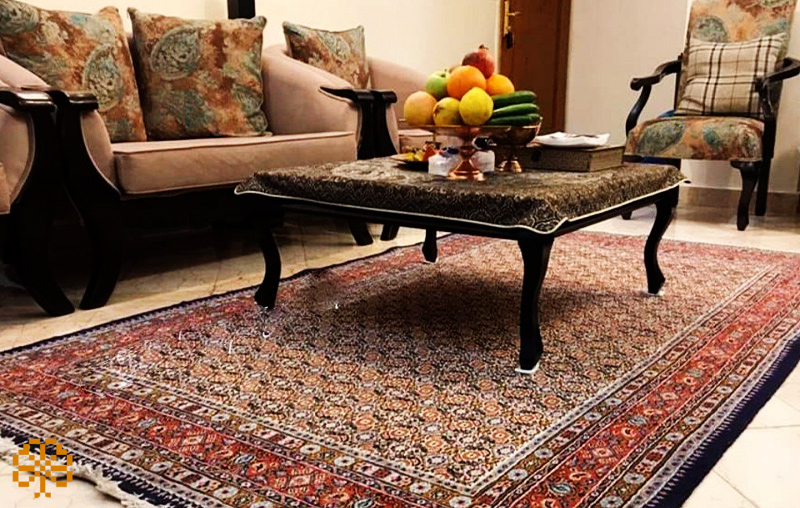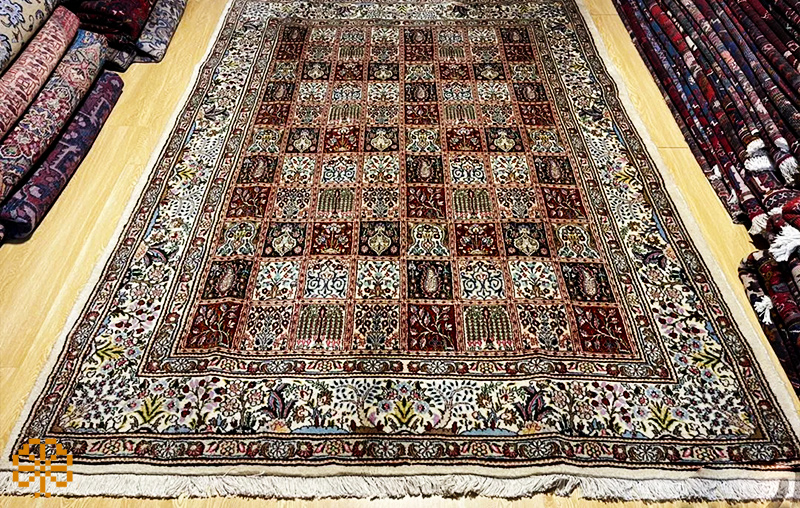Mode Birjand handmade carpet and its buying guide

The handmade carpet of Birjand city can be introduced as one of the popular options among carpet buyers, which is known for its economical price and high quality compared to the cost.
In this article about Farahan carpets, we are going to examine the specifications of Mod handwoven carpets in detail and at the end we will have important recommendations for those who intend to buy them.
Introduction of Mod handmade carpet
In the past, Mod was considered one of the villages of South Khorasan province, which gradually became one of the cities of this province, this city is located in Mod section of Sarbisheh county.
Mode is a city with historical history in the south of South Khorasan province and is located 30 km from the Birjand-Zahedan road. The name of this village is derived from the eagle’s nest and the eagle itself, whose feathers are shot.
In the past, this village made Birjand carpet weaving world famous with its unique carpet weaving. As far as we can say, more than Birjand carpets are known; This is a well-known handmade carpet.
Many believe that the type of carpet weaving and the designs used in the mod are taken from the hand-woven carpets of Kerman.
Unfortunately, due to the bad economic conditions that exist in this region of Iran, many conditions were not provided for the growth of carpet weaving in this region, and it can even be said that it was carpet weaving that was able to make the conditions a little more favorable for the people of this region.
According to the surveys, the years 1310 to 1320 can be introduced as the peak and prosperity of carpet weaving in Mode. Many people say that Haji Asadi, known as Misbah-ul-Sultaneh, was the founder of hand-woven carpet weaving in Mod, and he was able to spread this precious art among the people of this village by opening a large workshop with 40 rugs.
Specifications of Mode Birjand handwoven carpet
It can be said that one of the main characteristics of Mod handwoven carpet is its special strength in its dyeing. In the carpets of this village, in the past, only vegetable and natural carpet colors were used, but this was not the whole story. In order to increase the transparency of the color of their carpets, the carpet weavers of this area even dyed the wool picked from the sheep’s back by hand. They used to paint and this also made the carpets of this region known.
The woven carpets in Mod city are woven using Persian knots and on vertical dars, and in terms of appearance, some dars of Mod carpets are composed of only two parts, the head and the under dar.
The raw materials used for weaving Mod carpet are two main materials: wool and cotton. Sheep wool has been used for piles of carpets and interwoven cottons have been used for warp and weft. Of course, it is sometimes and rarely seen that in some special orders, silk is also used to weave carpets in this area.
Mod’s handwoven carpet index starts from 30 and continues to 45, and this wide variety has made it possible for those who want carpets from this region to choose according to their budget. have their own suitable choice.
Read more: washing silk carpet at home and its step-by-step training
Common carpet designs
A very interesting point that you need to know about Mod handwoven carpet designs is that; In the world markets, the fish design is known as the Mod design, while in this village and the villages of Mod, a carpet with the design of the fish has never been woven and this design is woven in other areas of Birjand city. 🙂
Common designs woven in the city of Mode are as follows:
Clay design: inside this design of the Mod hand-woven carpet, you will not see any trace of lath and tanraj. This design is made up of colorful squares that are stuck together, which includes different roles of flowers, fish, trees, etc. Tarakhshti is also known as Four Seasons or Bakhtiari.
Saadi design: This design can be introduced as the original mod design, which was designed by a person with the same name. Saadi’s design has lace and bergamot, which is worked in the background of spiraling flowers mixed with slime. Saadi’s solar bergamot has a special fame and reputation.
Horse head design: As the name suggests, this design is derived from the presence of 16 winged horses that cover the central tang. In this map, flowers and leaves cover the entire text, which is often pale cream and chocolate in color.
The design of false maps: you may be a little surprised by the name of this design, but it is a common term among the Mod people that refers to designs that have no history of weaving in the region and the weaver weaves them on the order of a person or a merchant. They use it wrongly.
Bute Jagkeh design: Another design that does not have elastics is the Jakeh plant design. Some believe that this pattern is a representation of an Indian plant, and as a result, they believe that Bete Jagheh came to Iran from India, but there are many historical evidences that Bete was originally a cedar. In fact, in this design, you can see the pattern of the whole bush in regular rows, which is filled with all kinds of flowers and small leaves.
Guide to buying handmade rugs
If we were to go back many years ago and someone wanted to buy a Mod handwoven carpet, we should have told that person blindfolded that the carpets of this area are of great quality and the price is right for you to buy.
But unfortunately, a bitter incident has happened in the history of Mod carpets, which can be considered as a black spot in the past of carpets in this region. In previous years, due to the lack of good carpet weaving workshops in Sistan and Baluchistan province, many Baloch elders turned to buying carpets from this region due to the high quality of carpets from the Mod area. But after some time, a big problem arose:
Chemical dyes were introduced into the dyeing of Rasuta Mode, and the carpets of this region are no longer produced with natural dyes. But since the Baloch people were not very familiar with chemical dyes and carpets in general, they continued to buy Mod carpets at the same price as before, and this caused a heavy blow after the people of this area became aware of this issue. To enter the credit of carpet weaving mode.
Although, in recent years, many carpet weavers of this area have tried to return the carpet of this area to its previous position, but it must be said that this has not been achieved yet.
Birjand mode carpet price
In this matter, there is no doubt that you cannot specify an exact and specific price for carpets in any city or region, but if we want to divide the price of Mod handwoven carpets into 4 main categories based on quality, it should be said:
Expensive microtextiles: woven carpets with the number of rows between 40 and 45 can be placed in this category, which have a price between 5 and 6 million per square meter. In this category, the products of Amini brothers are among the most famous braids.
Average price: The next option, which is the most famous product of the relief committee, has a price between 4 and 4.5 million tomans per square meter, and the number of rows is between 37 and 42.
Normal price: level 3, miscellaneous products are filled with non-tanned wool that has about 32 to 37 rows of texture and costs about 2.5 to 3.5 per square meter.
Cheap price: the last option of rugs produced in the Mod region can be introduced with tanned wool products, which are light in weight and are usually woven with a count of about 30 and have a price between 2 and 2.5 million tomans per square meter. is. The problem with these braids is that they wear out very quickly.
In this article, we have tried to examine all the necessary things about the hand-woven carpets of Birjand mode and tell you as much as we can the essential points that you should know before buying the carpets of this region.





